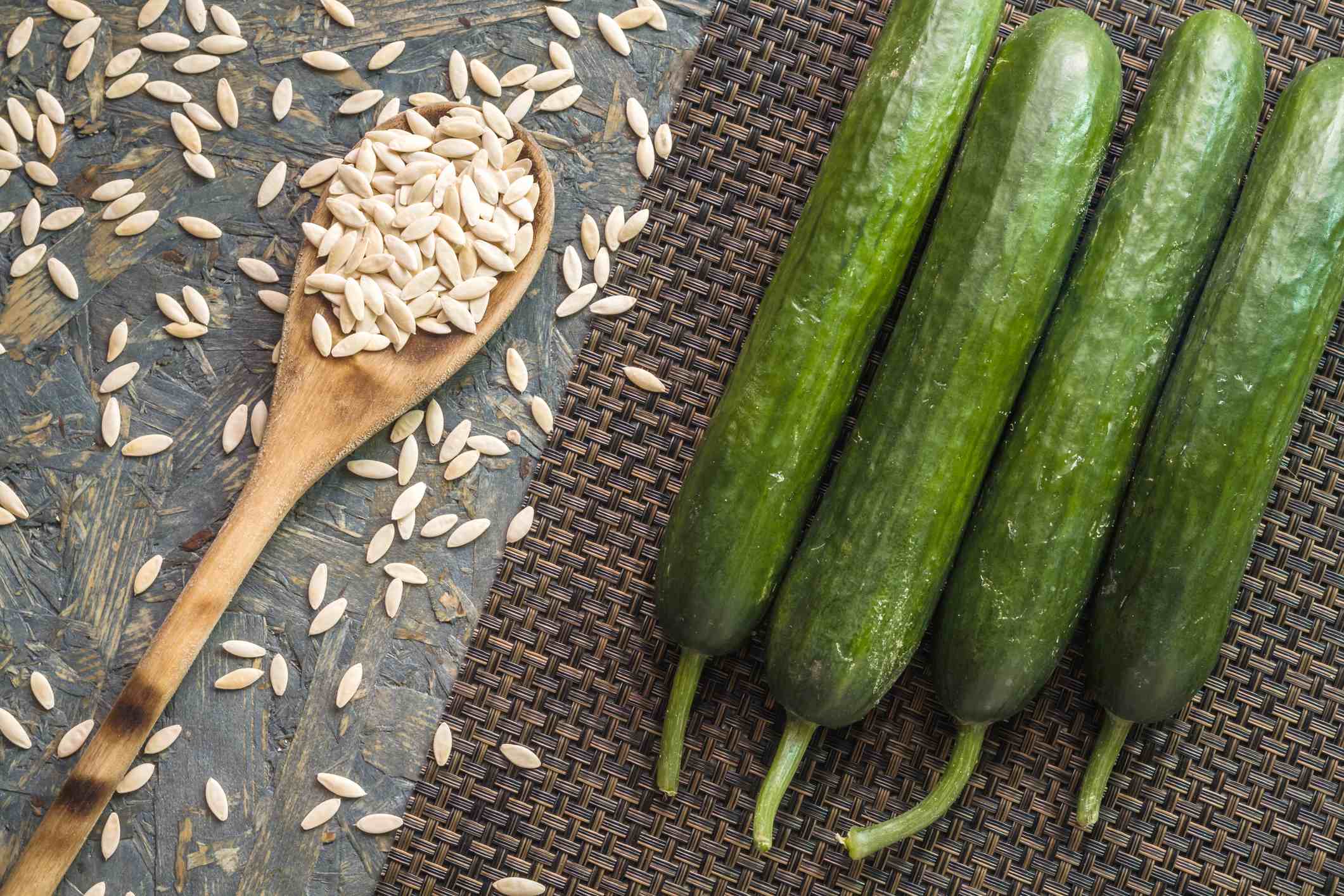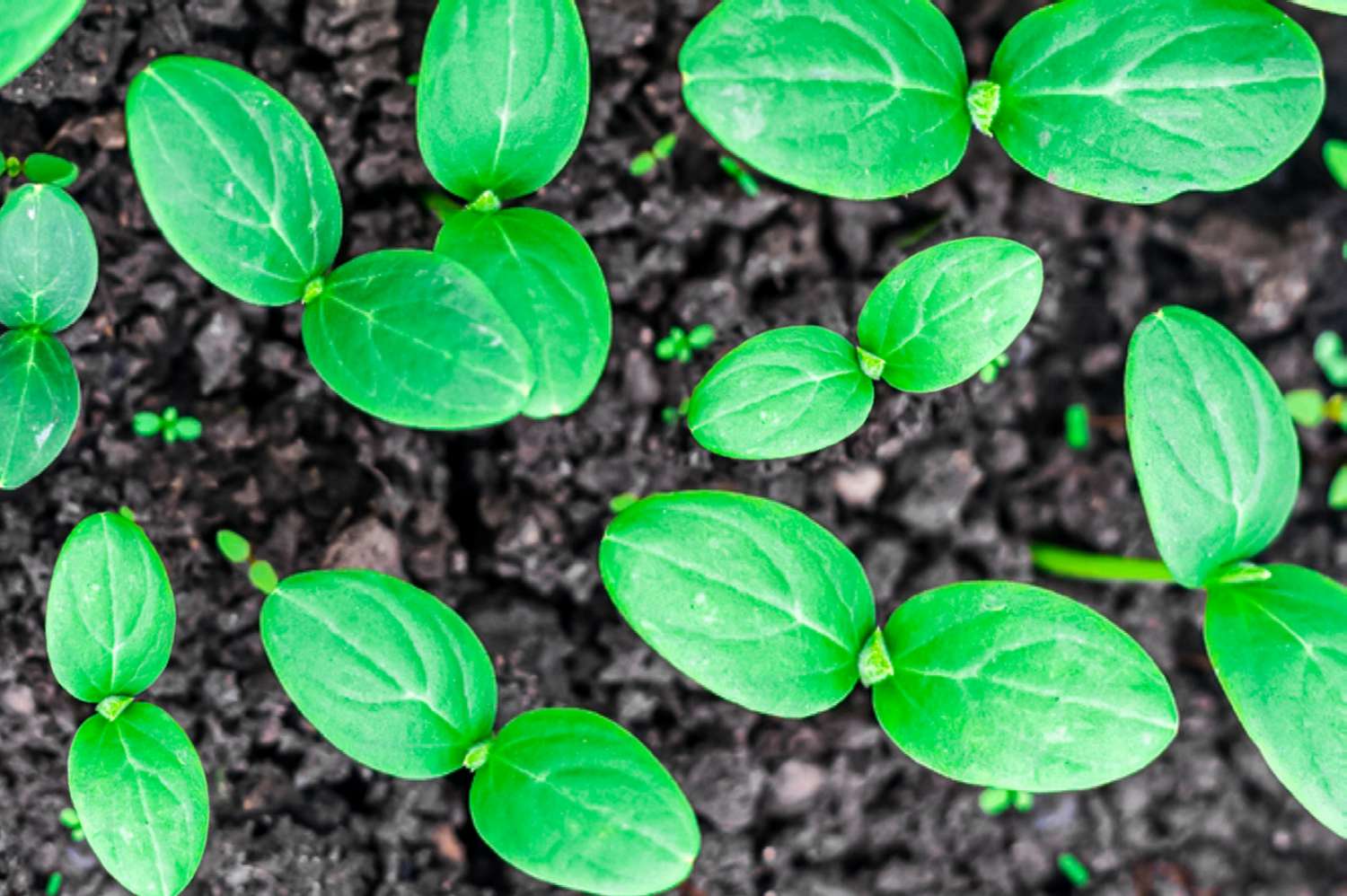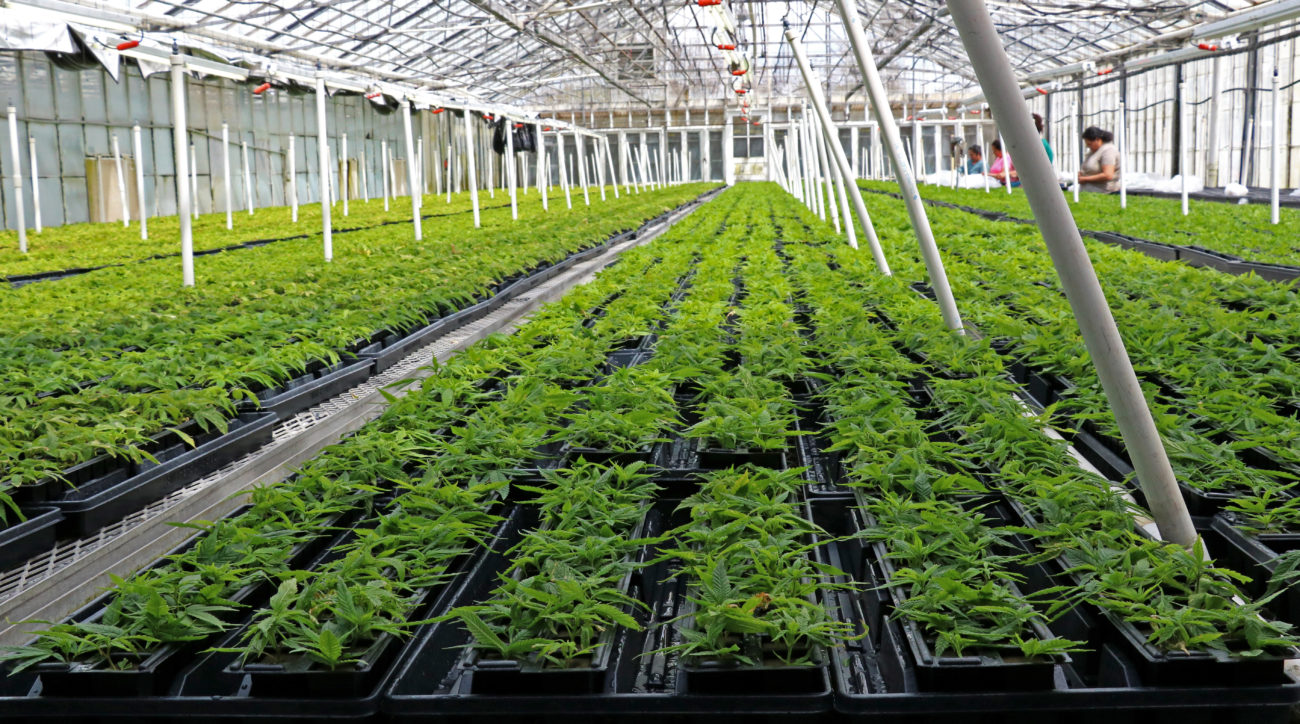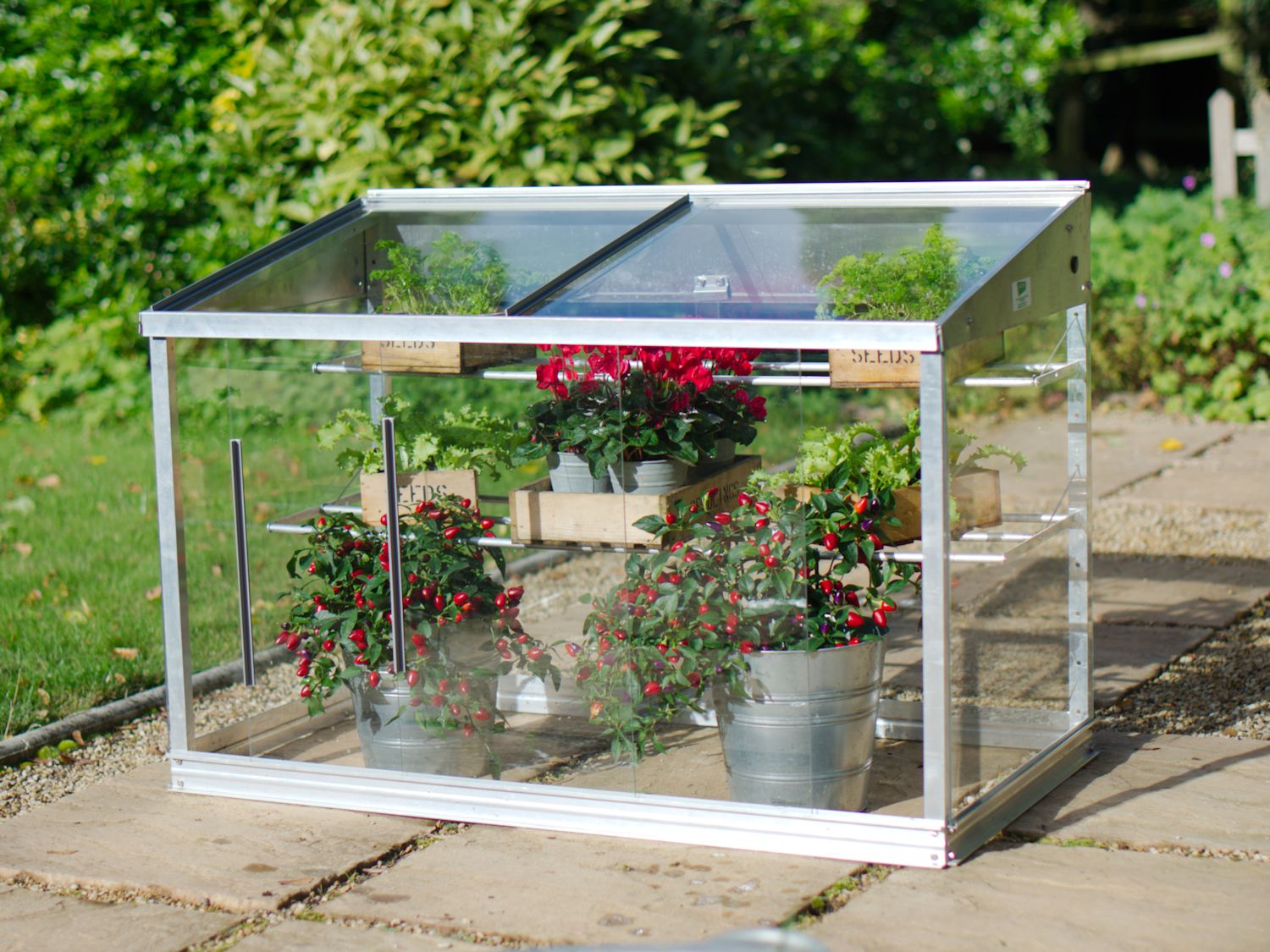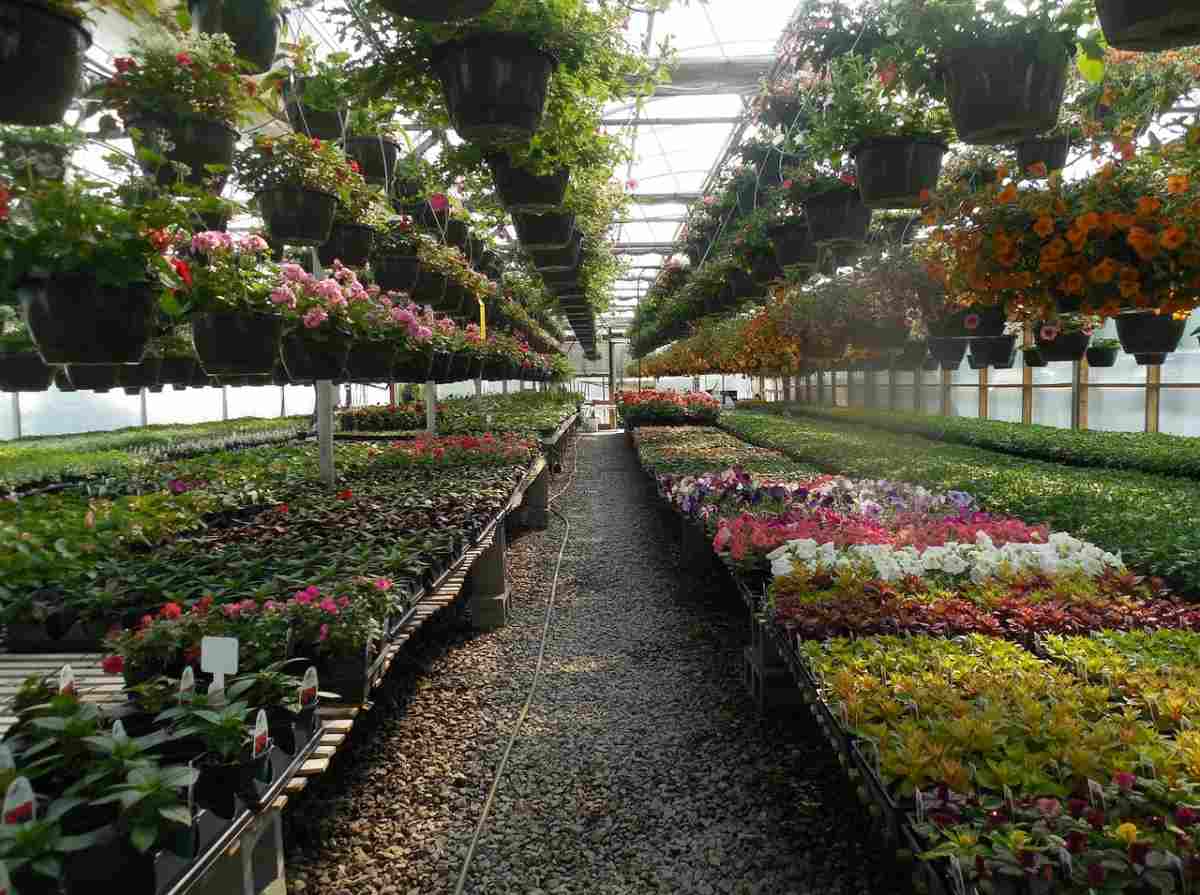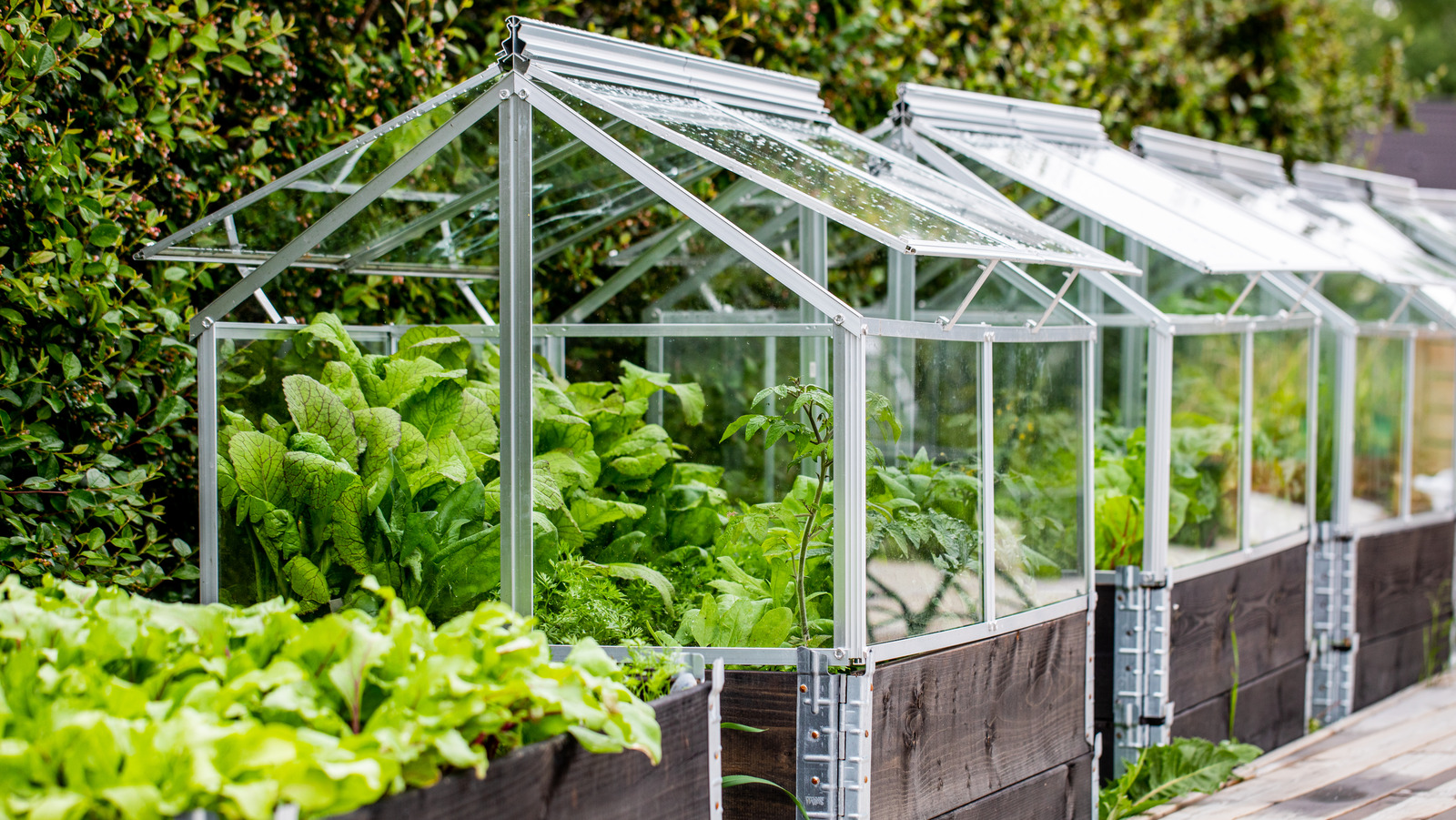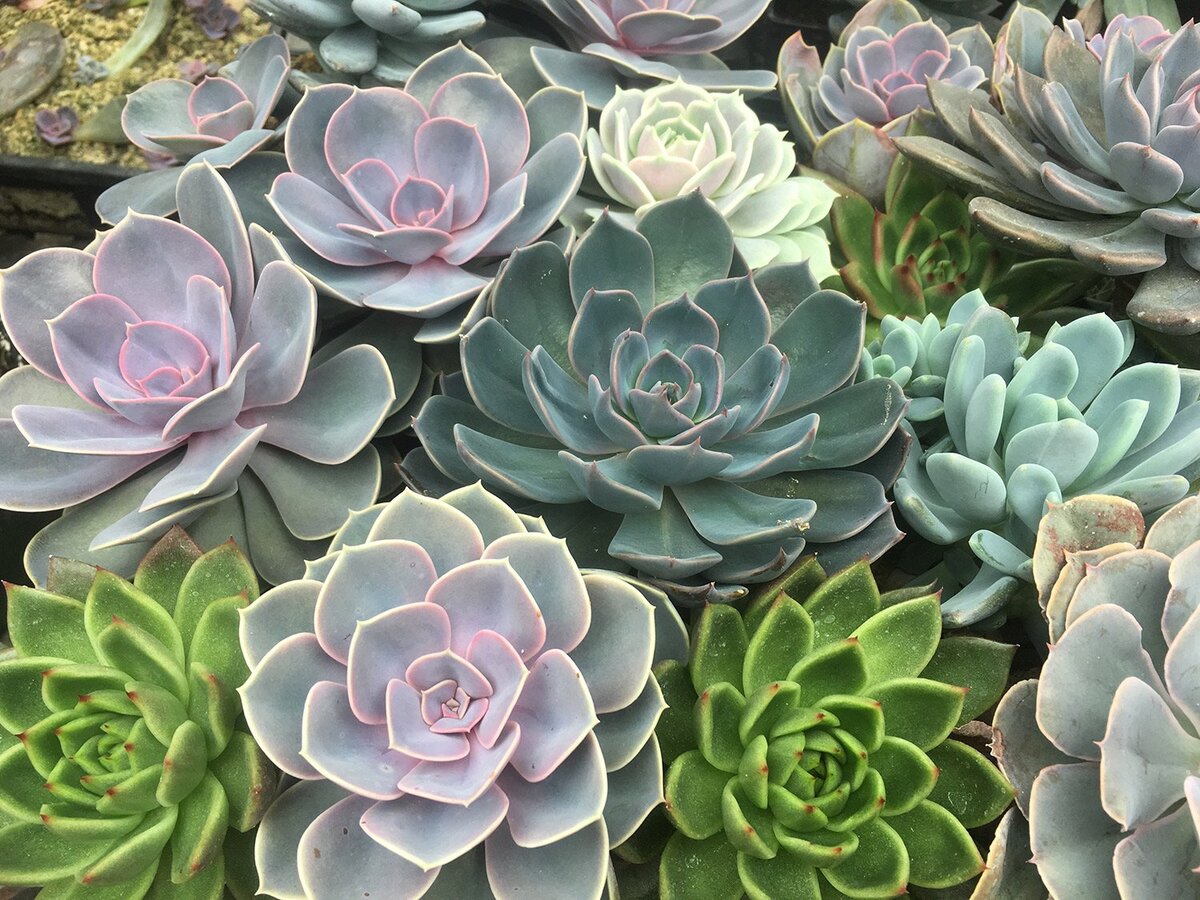Home>Gardening Techniques>How To Grow Cucumbers In Greenhouse
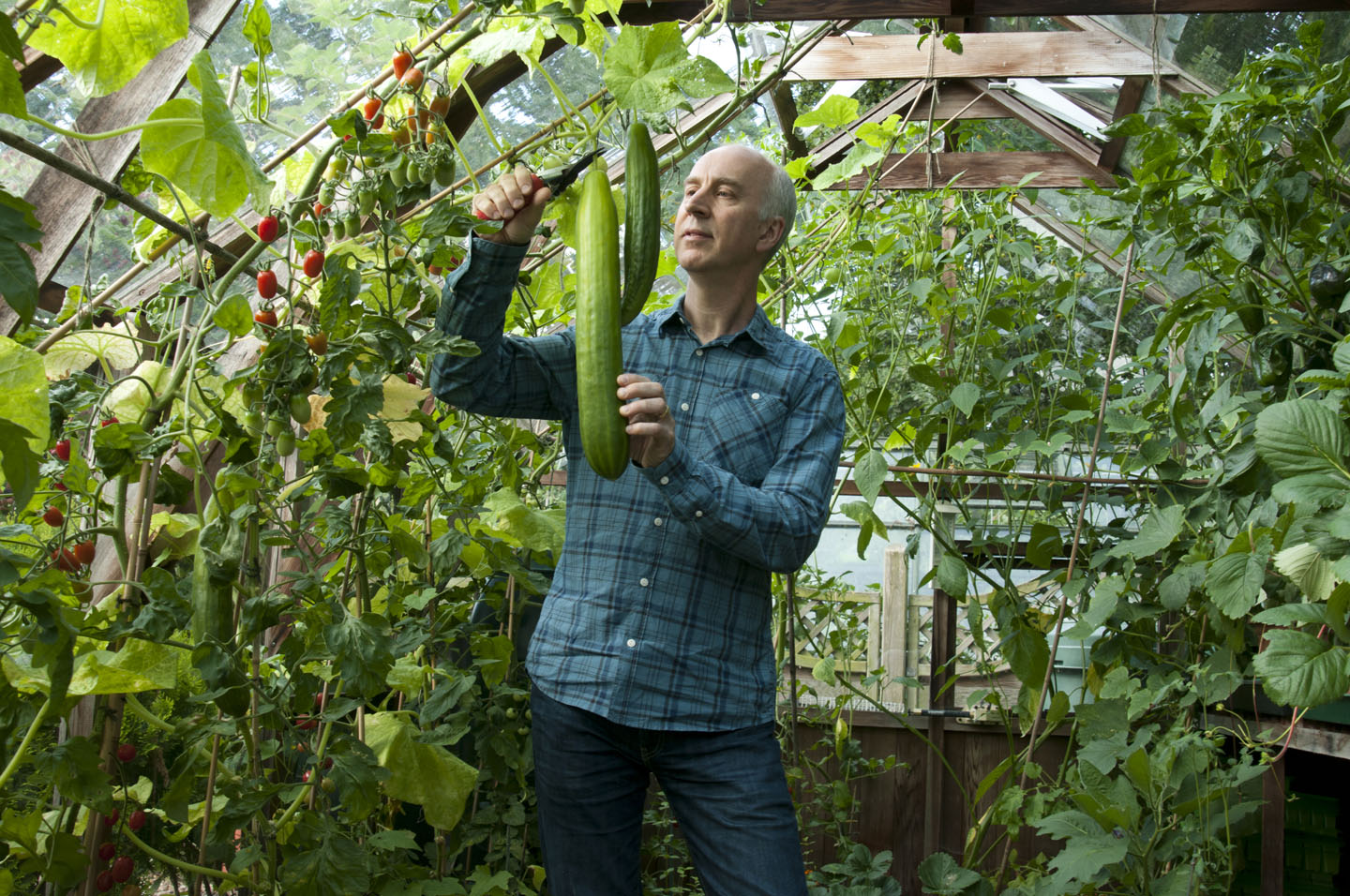

Gardening Techniques
How To Grow Cucumbers In Greenhouse
Modified: January 22, 2024
Learn essential plant care tips to successfully grow cucumbers in a greenhouse. Discover the secrets to healthy, abundant cucumber harvests with our expert advice.
(Many of the links in this article redirect to a specific reviewed product. Your purchase of these products through affiliate links helps to generate commission for Chicagolandgardening.com, at no extra cost. Learn more)
Table of Contents
- Introduction
- Benefits of Growing Cucumbers in a Greenhouse
- Choosing the Right Cucumber Varieties
- Setting Up the Greenhouse
- Soil and Fertilizer Requirements
- Temperature and Humidity Control
- Watering and Irrigation
- Pest and Disease Management
- Pruning and Training Techniques
- Pollination Methods
- Harvesting and Storage
- Conclusion
Introduction
Welcome to the world of greenhouse gardening! If you have a passion for plants and want to take your gardening skills to the next level, growing cucumbers in a greenhouse is a fantastic option. Not only does it allow you to enjoy a bountiful harvest, but it also extends the growing season and provides a controlled environment for optimal plant growth.
Greenhouse gardening offers numerous benefits, including protection from the elements such as unpredictable weather, pests, and diseases. By creating a suitable microclimate, you can provide cucumbers with the ideal conditions they need to thrive and produce an abundance of juicy, crisp cucumbers.
Whether you are a seasoned gardener or a beginner, this article will guide you through the process of growing cucumbers in a greenhouse. We will explore the various considerations, techniques, and tips to ensure a successful cucumber harvest.
From selecting the right cucumber varieties to maintaining the proper temperature, humidity, and watering requirements, you will learn the essentials of greenhouse cucumber cultivation. Additionally, we will discuss pest and disease management, pruning techniques, pollination methods, and the best practices for harvesting and storing your cucumbers.
We understand that each gardener has unique goals and challenges, so we have included a comprehensive range of information to help you tailor your approach and achieve the best results. So, let’s get started on this exciting journey of growing cucumbers in a greenhouse!
Benefits of Growing Cucumbers in a Greenhouse
Growing cucumbers in a greenhouse offers several advantages that can greatly enhance your gardening experience and increase your chances of a successful harvest. Here are some key benefits:
- Extended Growing Season: One of the major advantages of greenhouse cultivation is the ability to extend the growing season. Cucumbers are warm-season crops that thrive in temperatures between 70°F and 90°F. By providing a controlled environment, a greenhouse allows you to start growing cucumbers earlier in the spring and continue harvesting later in the fall, well beyond the typical outdoor growing season.
- Protection from Weather Elements: Cucumbers are sensitive to fluctuations in weather conditions, including temperature extremes, heavy rainfall, and strong winds. A greenhouse protects your plants from these elements, reducing the risk of damage and ensuring a more stable and predictable growing environment. This protection is particularly beneficial in regions with unpredictable weather patterns.
- Controlled Environment: Greenhouse gardening allows you to have precise control over important environmental factors such as temperature, humidity, and light. This control is crucial for optimizing cucumber production. You can adjust these conditions to match the specific needs of your cucumber plants, ensuring they have optimal growing conditions throughout their lifecycle.
- Increased Yields: With the right care and management, greenhouse-grown cucumbers can produce higher yields compared to outdoor cultivation. The controlled environment allows for optimal growth, which can lead to larger and more abundant cucumbers. This is especially beneficial if you have limited space and want to maximize your harvest.
- Pest and Disease Management: Greenhouse gardening provides a physical barrier against a range of pests, including insects and animals, that can damage or destroy cucumber plants. Moreover, the controlled environment limits the spread of common cucumber diseases, such as powdery mildew and bacterial wilt. These factors contribute to healthier plants and reduced reliance on pesticides.
- Efficient Water and Nutrient Management: In a greenhouse, you have more control over the watering and fertilization of your cucumber plants. This allows for efficient use of resources, reducing water waste and ensuring that the plants receive the necessary nutrients for robust growth. Proper management of water and nutrients can lead to healthier and more productive cucumber plants.
These are just a few of the benefits that come with growing cucumbers in a greenhouse. Whether you are a hobbyist gardener or a commercial grower, this method provides a reliable and rewarding way to cultivate cucumbers and enjoy a bountiful harvest throughout the year.
Choosing the Right Cucumber Varieties
When it comes to growing cucumbers in a greenhouse, selecting the right cucumber varieties is crucial for a successful harvest. Different cucumber types have varying growth habits, flavors, and disease resistance. Here are some factors to consider when choosing cucumber varieties for your greenhouse:
- Growth Habit: Cucumbers come in two main growth habits: bush and vining. Bush varieties tend to have a more compact, bushy growth habit that is suitable for smaller spaces or containers. Vining varieties, on the other hand, have longer vines that require more vertical space for support. Consider the size and layout of your greenhouse to determine which growth habit is more suitable for your needs.
- Harvest Time: Cucumber varieties have different maturity dates, ranging from early-maturing to late-maturing. Early-maturing varieties produce cucumbers ready for harvest in a shorter period, which is ideal if you want to enjoy cucumbers sooner. Late-maturing varieties take longer to produce fruits but may offer higher yields. Consider your desired harvest timeline when selecting cucumber varieties.
- Disease Resistance: Cucumbers are susceptible to various diseases, including powdery mildew, downy mildew, and cucumber mosaic virus. Look for cucumber varieties that have resistance or tolerance to these common diseases. Disease-resistant varieties are more likely to maintain healthy foliage and produce abundant fruits, even when faced with disease pressure in the greenhouse.
- Taste and Texture: Cucumber varieties can vary in taste, texture, and crunchiness. Some cucumbers are known for their crispness, while others are sweeter or have a more traditional cucumber flavor. Consider your personal preferences and culinary needs when selecting cucumber varieties. You may also want to experiment with different varieties to discover your favorites.
- Pickling or Slicing: Determine whether you want cucumbers primarily for pickling or slicing. Pickling cucumbers are typically smaller, with bumpy skin and a firm texture, making them ideal for canning and preserving. Slicing cucumbers are larger and typically have smoother skin, making them great for fresh salads and sandwiches. Choose varieties that are best suited for your intended use.
- Hybrid or Heirloom: Cucumber varieties come in hybrid and heirloom options. Hybrid varieties are bred for specific traits such as disease resistance, high yields, or uniformity. Heirloom varieties, on the other hand, are open-pollinated and have been passed down through generations for their unique characteristics. Consider the advantages and disadvantages of each type and choose based on your preferences.
Take your time to research and select cucumber varieties that best align with your needs and greenhouse conditions. By choosing the right cucumber varieties, you set yourself up for a successful and rewarding cucumber-growing experience in your greenhouse.
Setting Up the Greenhouse
Properly setting up your greenhouse is essential for creating an optimal growing environment for cucumbers. Here are some key considerations when setting up your greenhouse:
- Location: Choose a location for your greenhouse that receives ample sunlight throughout the day. Cucumbers thrive in full sun, so try to avoid areas with excessive shade. Additionally, consider proximity to a water source and ease of access for maintenance and harvesting.
- Greenhouse Structure: Select a greenhouse structure that suits your needs and budget. Common options include glass, polycarbonate, or polyethylene-covered structures. Each material offers different levels of insulation, durability, and light transmission. Consider the climate in your area and the required temperature and humidity control when choosing the greenhouse structure.
- Ventilation: Proper ventilation is crucial for maintaining optimal airflow and temperature control. Install vents or fans in your greenhouse to allow for air circulation and prevent heat buildup during hot summer months. Adequate ventilation helps reduce the risk of fungal diseases and ensures healthy cucumber growth.
- Shading: In areas with intense sunlight or high temperatures, consider using shade cloth or applying shade paint on the greenhouse roof to reduce the risk of plant stress and sunburn. Shade cloth can be easily applied or removed based on weather conditions, allowing you to adjust shading as needed throughout the growing season.
- Benching and Shelving: Utilize benches or shelving within your greenhouse to optimize space and provide an organized growing area for your cucumber plants. Elevated benches allow for better air circulation and drainage, which helps prevent disease issues. Ensure the benches or shelving are sturdy and can support the weight of the plants and fruits.
- Irrigation and Watering: Install a drip irrigation system or utilize a watering method that ensures consistent and efficient water delivery to your cucumber plants. Monitor soil moisture levels regularly and adjust watering accordingly. Avoid overwatering, as this can lead to root rot and other moisture-related issues.
- Supplemental Lighting: In areas with limited sunlight or during the winter months, consider installing supplemental lighting to provide the necessary light for optimal cucumber growth. LED grow lights are energy-efficient and can be tailored to the specific light spectrum required by cucumbers.
- Accessories and Tools: Stock your greenhouse with essential tools and supplies such as trellises or stakes for supporting cucumber vines, pruning shears for maintaining plant health, and plant ties for securing vines. Having these tools readily available will make your greenhouse gardening tasks more convenient and efficient.
By properly setting up your greenhouse, you create a favorable environment for cucumber growth and ensure that your plants have the best possible conditions for a successful and abundant harvest.
Soil and Fertilizer Requirements
The soil in your greenhouse plays a crucial role in providing essential nutrients and a suitable growing medium for your cucumber plants. Here are some important considerations for soil and fertilizer management when growing cucumbers in a greenhouse:
- Soil Type: Cucumbers thrive in well-draining soil that is rich in organic matter. Opt for a high-quality potting mix or a well-balanced soil blend specifically formulated for greenhouse cultivation. Avoid heavy clay soils, as they can lead to drainage problems and hinder root development.
- Soil pH: The ideal soil pH range for cucumber growth is between 6.0 and 7.0. Conduct a soil test to determine the pH level of your greenhouse soil and amend it if necessary. pH adjusters such as lime or sulfur can be used to raise or lower the pH levels accordingly.
- Organic Matter: Incorporate organic matter, such as compost or well-rotted manure, into the soil to improve its structure, water-holding capacity, and nutrient content. Organic matter also encourages beneficial soil microorganisms that contribute to overall plant health.
- Fertilization: Cucumbers are heavy feeders and require regular fertilization to meet their nutrient demands. Use a balanced, slow-release fertilizer or an organic fertilizer, following the manufacturer’s instructions for application rates. Apply the fertilizer prior to planting and continue with regular fertilization throughout the growing season to ensure consistent nutrient supply.
- Micro and Macronutrients: Cucumber plants require a range of essential nutrients for optimal growth. In addition to nitrogen (N), phosphorus (P), and potassium (K), they also benefit from micronutrients such as iron, zinc, manganese, and magnesium. Consider using a complete fertilizer or incorporating micronutrient supplements to ensure a well-rounded nutrient supply.
- Top-Dressing: As the growing season progresses, periodically top-dress the soil surface with compost or aged manure to replenish nutrients and maintain soil fertility. This practice helps sustain healthy plant growth and ensures that the cucumbers receive the necessary nutrients for productive yields.
- Irrigation and Moisture Management: Proper irrigation is essential for nutrient uptake in cucumber plants. Avoid overwatering, as it can lead to nutrient leaching and root rot. Provide consistent moisture by using a drip irrigation system or watering at the base of the plants to prevent wetting the foliage unnecessarily.
- Monitoring and Adjusting: Regularly monitor your plants for nutrient deficiencies or excesses. Yellowing leaves, stunted growth, or poor fruit set may indicate nutrient imbalances. Adjust your fertilizer application accordingly or conduct a soil test to identify and address any issues.
By ensuring that your greenhouse soil is rich in nutrients and properly managed, you provide the foundation for healthy cucumber plants and an abundant harvest throughout the growing season.
Temperature and Humidity Control
Proper temperature and humidity control are essential for successful cucumber growth in a greenhouse. Cucumbers thrive in warm and humid environments. Here are some key considerations to effectively manage temperature and humidity in your greenhouse:
- Temperature: Maintain the greenhouse temperature within the optimal range for cucumber growth, which is between 70°F and 90°F (21°C – 32°C). Install a thermostat and monitor the temperature regularly. In cooler climates, use heaters or greenhouse heating systems to raise the temperature during colder periods. Ventilation, fans, and shade cloth can be utilized during hot summer months to prevent excessive heat buildup.
- Humidity: Cucumbers prefer a relatively high humidity level ranging from 70% to 80%. Monitor the humidity levels in your greenhouse using a hygrometer. To increase humidity, use misting systems, evaporative coolers, or place trays of water near the plants. Reduce humidity levels if they become excessively high by improving ventilation or using dehumidifiers. Maintaining a proper balance of humidity helps prevent issues like powdery mildew and ensures healthy cucumber foliage.
- Air Circulation: Adequate air circulation within the greenhouse is crucial for temperature and humidity control, as well as preventing the build-up of stagnant air. Use fans or natural ventilation to achieve proper airflow. This helps regulate temperature, reduces humidity problems, and prevents the risk of fungal diseases. Additionally, it aids in pollination by facilitating the movement of air and pollen around the cucumber plants.
- Shading: In areas with intense sunlight, provide shading to prevent direct sunlight from overheating the greenhouse and causing stress to the cucumber plants. Shade cloth, applied to the roof or sides of the greenhouse, can help reduce excessive heat and maintain more balanced temperature and humidity levels.
- Thermal Screens: Thermal screens or shade curtains can be installed in the greenhouse to regulate temperature and humidity. These screens provide additional insulation during cold periods and help reduce excessive heat during hot periods. They also help maintain a more stable environment and minimize fluctuations in temperature and humidity.
- Monitoring and Adjusting: Regularly monitor the temperature and humidity levels in your greenhouse, making adjustments as needed. Focus on achieving a balance between the environmental conditions and the needs of your cucumber plants. Maintaining stable and optimal conditions will promote vigorous growth, flowering, and fruiting, ultimately leading to a successful cucumber harvest.
By effectively controlling temperature and humidity in your greenhouse, you create an environment that supports healthy cucumber growth and maximizes your chances of a productive harvest.
Watering and Irrigation
Proper watering and irrigation practices are crucial for the successful growth of cucumbers in a greenhouse. These practices help ensure that your plants receive adequate moisture while minimizing the risk of water-related issues. Here are some key considerations for watering and irrigation in your greenhouse:
- Water Requirements: Cucumbers have high water needs, especially during their active growth and fruiting stages. They require consistent moisture to support healthy plant growth and fruit development. Monitor the soil moisture levels regularly, and aim to keep the soil evenly moist. Avoid waterlogging the soil, as excessive moisture can lead to root rot and nutrient leaching.
- Watering Methods: Utilize a watering method that delivers water directly to the root zone of the cucumber plants. Drip irrigation systems or soaker hoses are highly efficient and minimize water waste by delivering water directly to the plants’ base. Avoid overhead watering, as wet foliage can increase the risk of fungal diseases.
- Irrigation Schedule: Establish a regular watering schedule for your cucumber plants, taking into account the specific needs of your greenhouse environment. Consider factors such as temperature, humidity, and plant growth stage. During warmer periods, you may need to water more frequently, whereas cooler periods may require less frequent watering. Aim for consistent soil moisture without allowing the soil to completely dry out between waterings.
- Moisture Monitoring: Regularly monitor the moisture levels in the soil using a moisture meter or by visually inspecting the soil. Insert the meter into the soil and ensure that it reads an appropriate moisture level for cucumber growth. If the soil feels dry at a depth of about an inch, it is a good indication that it’s time to water.
- Drainage: Ensure that your greenhouse has proper drainage to prevent water from pooling around the plants’ roots. Good drainage helps avoid waterlogging and reduces the risk of root diseases. If your greenhouse lacks natural drainage, consider adding drainage tiles or raised beds to improve water flow and prevent standing water.
- Water Conservation: While it’s important to provide adequate hydration to your cucumber plants, it’s also essential to conserve water. Consider using water-saving techniques such as mulching around the plants to reduce evaporation, collecting and utilizing rainwater, and optimizing your watering schedule to minimize waste.
- Monitoring Plant Health: Pay attention to your cucumber plants for signs of overwatering or underwatering. Overwatering may cause yellowing leaves, root rot, and stunted growth, while underwatering can result in wilting, dry soil, and poor fruit development. Adjust your watering practices accordingly to maintain optimal plant health.
By implementing proper watering and irrigation techniques, you provide your cucumber plants with the moisture they need for healthy growth and maximize your chances of a bountiful harvest in your greenhouse.
Pest and Disease Management
Pests and diseases can pose significant challenges to cucumber plants in a greenhouse. Implementing an effective pest and disease management plan is crucial to protect your crops and ensure a successful harvest. Here are some key practices to consider for pest and disease management:
- Monitor Regularly: Regularly inspect your cucumber plants for signs of pests or disease infestation. Look for symptoms such as yellowing leaves, wilting, chewed foliage, or presence of pests. Early detection allows for early intervention and helps prevent the spread of pests and diseases.
- Integrated Pest Management (IPM): Implement an Integrated Pest Management approach to control pests. This involves using a combination of cultural, mechanical, biological, and chemical methods to manage pest populations. Start with cultural practices such as proper sanitation, removing plant debris, and controlling weeds to reduce pest habitats and breeding grounds.
- Biological Controls: Use beneficial insects, such as ladybugs and predatory mites, to control common pests like aphids and spider mites. These natural predators feed on pests, reducing their populations without the need for chemical intervention. Introduce them to your greenhouse as part of your pest management strategy.
- Trap Crops: Plant trap crops, such as marigolds or nasturtiums, near your cucumber plants to attract and divert common pests away. This can help protect your cucumbers by luring pests to the trap crops instead.
- Sanitation: Practice good sanitation to prevent the spread of diseases. Clean up fallen leaves, remove and destroy infected plant material, and disinfect tools regularly. This reduces the reservoir of diseases and minimizes the chance of reinfection.
- Fungicide and Insecticide Use: If pest or disease pressures become severe, consider using appropriate fungicides or insecticides. Choose products labeled for use on cucumbers in greenhouses and follow the instructions carefully. Organic options, such as neem oil or insecticidal soap, can also be effective for controlling pests.
- Crop Rotation: Rotate your crops to prevent the buildup of pests and diseases in the greenhouse. Avoid planting cucumbers in the same location for consecutive seasons. Instead, rotate with non-cucumber crops to interrupt pest and disease life cycles.
- Resistant Varieties: Select cucumber varieties that are known to have resistance to common diseases. Resistant varieties can withstand disease pressure better and may require fewer pesticide applications. Check the seed packet or inquire with your supplier for information on disease resistance.
Remember that prevention is key when it comes to pest and disease management. By implementing proactive measures and regularly monitoring your cucumber plants, you can successfully manage pests and diseases in your greenhouse and protect your cucumbers throughout their growth cycle.
Pruning and Training Techniques
Pruning and training cucumber plants in a greenhouse is essential for maximizing productivity, improving air circulation, and managing the growth habit of the plants. Here are some important techniques to consider:
- Main Stem Pruning: Prune the main stem of your cucumber plants to encourage lateral growth and improve air circulation. Once your plants have developed a few true leaves, carefully pinch off the growing tip of the main stem to encourage the development of side branches. This will result in a bushier plant structure and allow more light to reach the lower parts of the plant.
- Sucker Pruning: Cucumber plants produce side shoots, known as suckers, at the point where the leaf meets the main stem. These suckers can divert energy away from fruit production and result in a dense foliage canopy. Regularly remove these suckers to focus the plant’s energy on fruit development. Use clean pruning shears or pinch them off with your fingers to avoid damaging the main stem.
- Vine Training: Cucumbers are vining plants, and training them to grow vertically is important to optimize space utilization and reduce the risk of disease. Install trellises or stake the main stems to provide support for the plants. As the vines grow, gently weave them through the trellis or tie them to the stakes using soft plant ties. This helps prevent sprawling and increases exposure to light and air.
- Leaf Removal: Removing some of the lower leaves of the cucumber plants can improve air circulation and reduce the risk of fungal diseases. Remove yellowing or diseased leaves promptly to prevent the spread of disease. However, ensure that you do not remove too many leaves, as they are essential for photosynthesis and energy production.
- Prune Excess Foliage: As the plants grow, prune excess foliage to maintain an open canopy. Crowded foliage can trap moisture and increase the risk of diseases. Remove any excessive or dense growth to improve airflow and light penetration to the lower parts of the plant.
- Training Cucumber Vines: As the vines grow, gently guide them along the trellis or stakes. Secure the vines with plant ties, making sure not to bind them tightly to allow for growth and flexibility. Training the vines helps prevent tangling and promotes even distribution of fruits, making harvesting easier and ensuring proper ripening.
- Regular Maintenance: Continuously monitor your cucumber plants and perform regular pruning and training as needed throughout the growing season. Maintenance should focus on removing excess growth, managing the plant’s shape and density, and allowing for proper air circulation and light exposure.
Pruning and training your cucumber plants in a greenhouse will help optimize space, improve airflow, and create an environment that is conducive to healthy growth and abundant fruit production.
Pollination Methods
Pollination is a crucial step in the cucumber plant’s reproductive process, leading to the formation of healthy and abundant fruits. In a greenhouse environment, where natural pollinators may be limited, it is necessary to employ pollination methods to ensure successful fruit set. Here are some effective pollination methods for greenhouse-grown cucumbers:
- Hand Pollination: Hand pollination involves manually transferring pollen from the male flowers to the female flowers. Identify the male flowers, which have thin stems and do not develop fruit behind the flower, and gently remove the petals. Transfer the pollen from the stamen of the male flower to the stigma of the female flower, which will have a small immature fruit behind it.
- Brush Pollination: Brush pollination is a variation of hand pollination that involves using a small brush or cotton swab to transfer pollen between flowers. Gently brush the inside of the male flower to collect pollen and then transfer it to the stigma of the female flower. This method ensures precise pollen transfer and can be useful when hand pollinating small or delicate flowers.
- Shaking or Vibrating: Another method to aid pollination is gently shaking or vibrating the plants. Vibrations can help dislodge pollen from the male flowers and increase the chances of it reaching the female flowers. You can use a small handheld vibrator or lightly shake the plants by hand to mimic the buzzing action of natural pollinators.
- Natural Pollinators: Although greenhouse environments may limit the presence of natural pollinators like bees, you can attract them by placing potted flowering plants or using bee-attracting scents. Additionally, if you have a small greenhouse, you may opt to introduce bumblebees or carpenter bees that are effective pollinators for cucumbers.
- Timing: To ensure successful pollination, perform hand pollination or shaking techniques during the peak flowering period when both male and female flowers are open. Male flowers typically appear before female flowers. Monitor your plants closely and schedule pollination efforts accordingly to maximize pollen transfer and fruit set.
- Repeat Pollination: It may be necessary to repeat the pollination process over several days to ensure optimal fruit set. Continue to monitor the presence of male and female flowers and perform hand pollination as needed throughout the flowering period. This helps ensure consistent and continued pollination, leading to a higher yield.
By employing effective pollination methods in your greenhouse, you can help improve fruit set and enhance the productivity of your cucumber plants. Regular monitoring, attention to detail, and suitable techniques will contribute to a successful harvest of delicious cucumbers.
Harvesting and Storage
Harvesting cucumbers at the right time and storing them properly is crucial to enjoy the full flavor and texture of these delicious vegetables. Here are some guidelines for harvesting and storing cucumbers:
- Harvesting Time: Cucumbers are typically ready for harvest when they reach their desired size and color. Depending on the variety, this can range from small pickling cucumbers to larger slicing cucumbers. Check the seed packet or consult with your supplier for specific information on the optimum harvest size for the variety you are growing.
- Harvesting Technique: Use sharp pruning shears or a knife to cut the cucumbers from the vine, taking care not to damage the plant or nearby fruits. Cutting the cucumbers rather than pulling them helps minimize damage and reduces the risk of injuring the plant.
- Frequency of Harvest: Regularly inspect your plants for ripe cucumbers and harvest them promptly. Cucumbers can quickly become overripe and lose their quality if left on the vine for too long. Harvest every few days during peak production periods to ensure you harvest cucumbers at their peak maturity.
- Quality Assessment: Examine each cucumber before harvest, ensuring they are firm, crisp, and have a vibrant color. Avoid harvesting cucumbers that are yellowing or showing signs of overripeness, as they may be mushy and less flavorful.
- Storage Requirements: Cucumbers are best stored at a temperature between 45°F and 50°F (7°C-10°C) with a relative humidity of 95%. If refrigerating, place them in a perforated plastic bag or wrap them in a paper towel to retain moisture. Do not store cucumbers near fruits that produce ethylene gas, such as melons or tomatoes, as this can accelerate spoilage.
- Storage Duration: Cucumbers are perishable and best consumed soon after harvest. Depending on the freshness and storage conditions, cucumbers can be stored for up to one week. However, they are most flavorful when eaten shortly after harvest, so it is recommended to enjoy them as soon as possible for the best taste and texture.
- Pickling: If you have an abundance of cucumbers, consider pickling them to extend their shelf life. Follow a trusted pickling recipe and ensure proper canning techniques are used to preserve the cucumbers for long-term storage.
- Consistent Harvesting: Regularly harvesting mature cucumbers promotes continuous fruit production by encouraging the plant to produce more flowers and fruits. Regular harvesting also prevents overburdening the plant, which can result in smaller or misshapen cucumbers.
By adopting proper harvesting techniques and storing cucumbers under the right conditions, you can enjoy the best taste and quality of your homegrown cucumbers for longer periods after harvest.
Conclusion
Growing cucumbers in a greenhouse is a rewarding experience that allows you to enjoy a bountiful harvest of fresh and flavorful cucumbers throughout the year. By following the right practices and techniques, you can create a controlled environment that promotes optimum growth and maximizes your chances of success.
From selecting the right cucumber varieties to setting up the greenhouse with proper temperature and humidity control, each step contributes to creating a favorable environment for your cucumber plants. Paying attention to soil and fertilizer requirements, implementing effective pest and disease management strategies, and utilizing appropriate pruning and training techniques are essential for maintaining plant health and productivity.
Remember to implement proper watering and irrigation methods, employ suitable pollination techniques, and harvest cucumbers at the right time for peak flavor and quality. By storing cucumbers correctly and utilizing them in a timely manner, you can savor the full freshness and taste of your homegrown cucumbers.
Whether you are a hobbyist or a commercial grower, the journey of growing cucumbers in a greenhouse offers numerous benefits. Not only can you extend the growing season and protect your plants from weather challenges and pests, but you also have the opportunity to enjoy a higher yield of cucumbers compared to outdoor cultivation.
So, roll up your sleeves, put on your gardening gloves, and embark on this exciting greenhouse adventure. With the proper knowledge and dedication, you can cultivate and harvest cucumbers that are sure to delight your taste buds and make your greenhouse a thriving and productive space.
